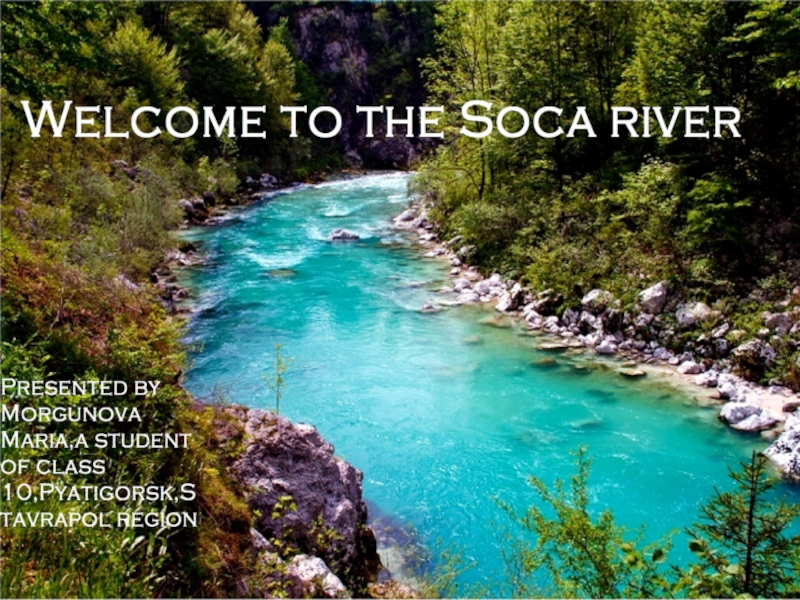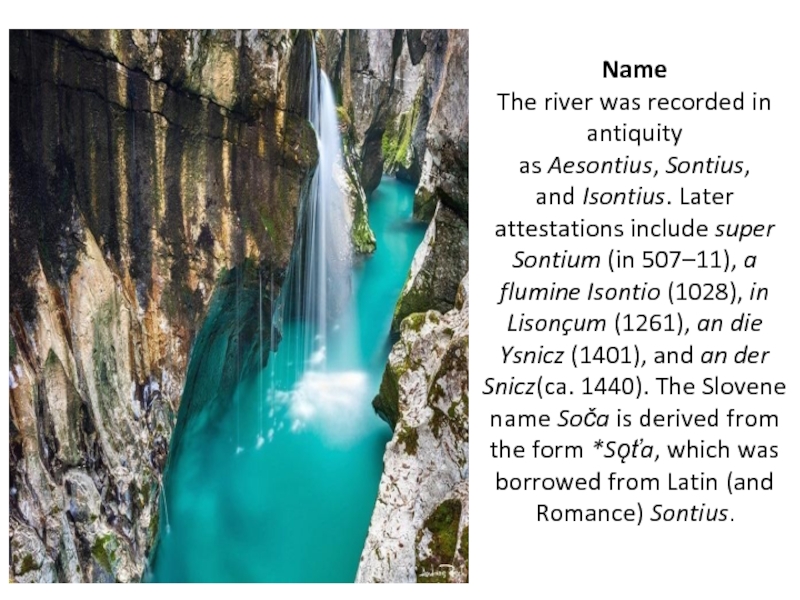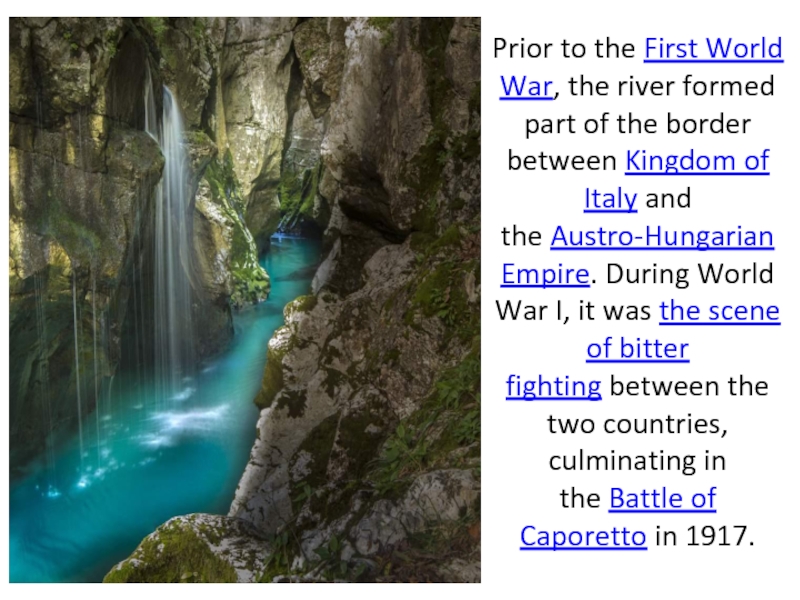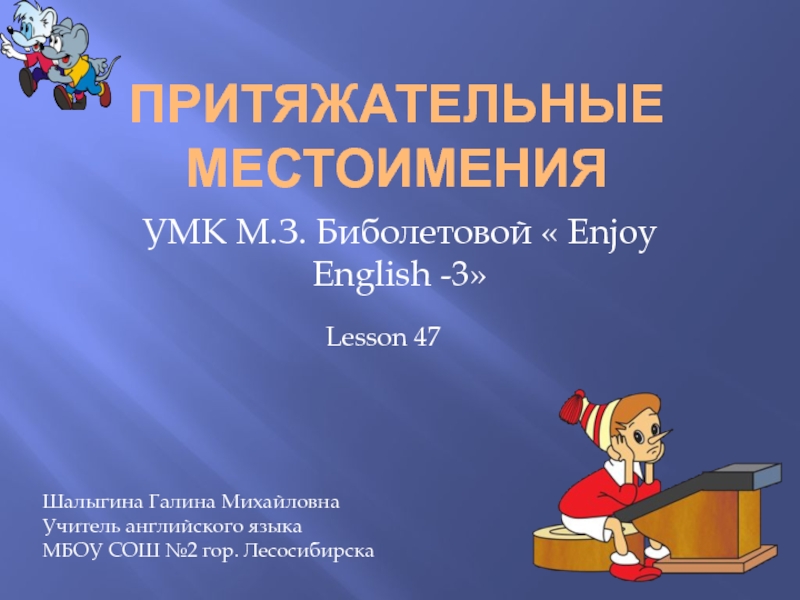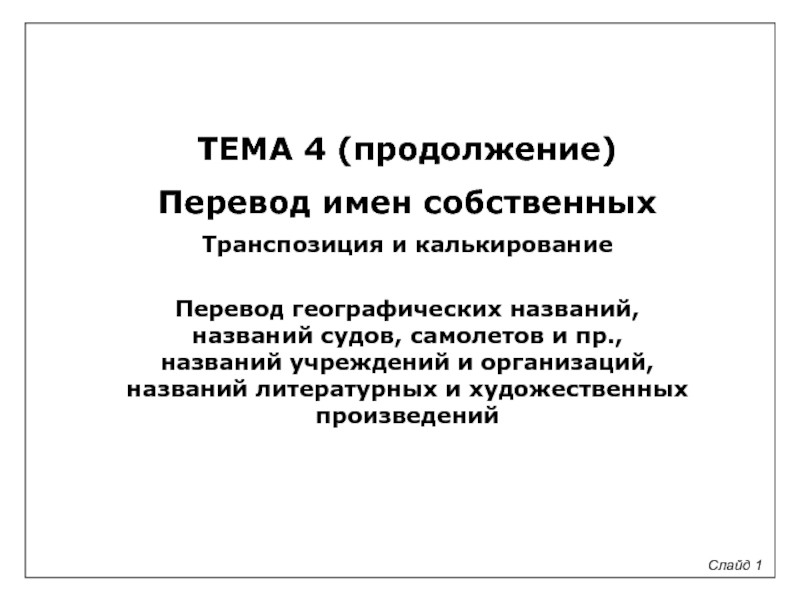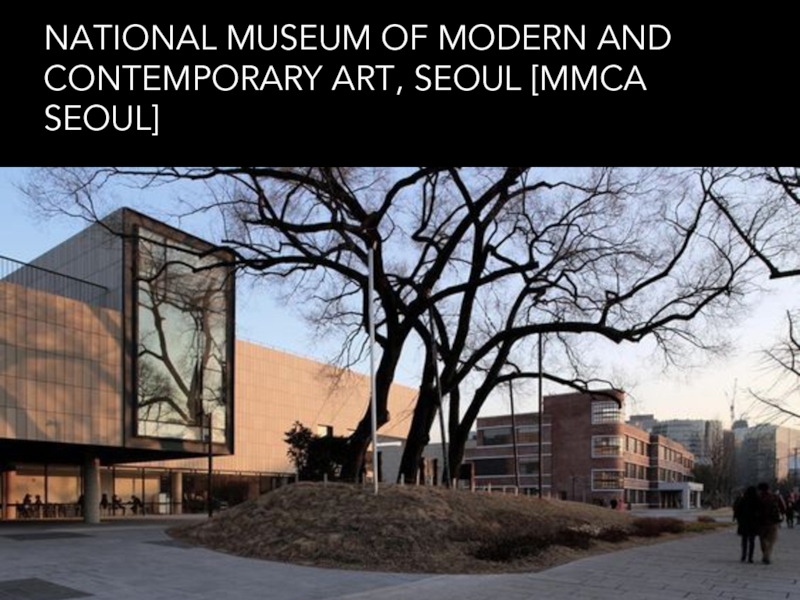in character, Soča has its source 1100 m high in the Julian Alps, west from Mt. Triglav. Flowing south past Bovec, Kobarid, Tolmin, Nova Gorica and Gorizia, it enters the Adriatic Sea near Monfalcone in Italy. The valley of Soča was the stage of major military operations (The Isonzo Front) in the First World War, which took over 500,000 human lives on both Austrian and Italian side.The famous and unique is the Soča trout (Slovenian Soška postrv), [Salmo trutta marmoratus], also named the Marble trout, who lives in the upper stream of crystal-clear river and is the endemic fish species of the river basin of the Adriatic Sea.
- Главная
- Разное
- Дизайн
- Бизнес и предпринимательство
- Аналитика
- Образование
- Развлечения
- Красота и здоровье
- Финансы
- Государство
- Путешествия
- Спорт
- Недвижимость
- Армия
- Графика
- Культурология
- Еда и кулинария
- Лингвистика
- Английский язык
- Астрономия
- Алгебра
- Биология
- География
- Детские презентации
- Информатика
- История
- Литература
- Маркетинг
- Математика
- Медицина
- Менеджмент
- Музыка
- МХК
- Немецкий язык
- ОБЖ
- Обществознание
- Окружающий мир
- Педагогика
- Русский язык
- Технология
- Физика
- Философия
- Химия
- Шаблоны, картинки для презентаций
- Экология
- Экономика
- Юриспруденция
Welcome to the Soca River презентация
Содержание
- 3. The river Soča (Italian Isonzo) is a river in West Slovenia and
- 4. Major changes in the watershed The
- 5. During the next centuries the estuary of
- 6. Name The river was recorded in antiquity
- 7. Prior to the First World War, the river
- 8. Due to its emerald green water, the river is
- 9. The Soča is also well known for
- 10. This river is listed by UNESCO.
Слайд 4Major changes in the watershed The present course of the river
is the result of several dramatic changes that occurred during the past 2,000 years. According to the Roman historian Strabo, the river named Aesontius, which in Roman times flowed past Aquileia to the Adriatic Sea, was essentially the Natisone and Torre river system.[6]
In 585, a landslide cut off the upper part of the Natisone riverbed, causing its avulsion and subsequent stream capture by the Bontius River. The original subterranean discharge of the Bontius into the Timavo became obstructed, and another avulsion returned the new watercourse into the bed of the lower Natisone.
Слайд 5During the next centuries the estuary of this new river—the Soča—moved
eastward until it captured the short coastal river Sdobba, through which the Soča now discharges into the Adriatic Sea. The former estuary (of the Aesontius, and the early Soča/Isonzo) in the newly formed lagoon of Grado became an independent coastal rivulet.[7]
Слайд 6Name The river was recorded in antiquity as Aesontius, Sontius, and Isontius. Later attestations include super
Sontium (in 507–11), a flumine Isontio (1028), in Lisonçum (1261), an die Ysnicz (1401), and an der Snicz(ca. 1440). The Slovene name Soča is derived from the form *Sǫťa, which was borrowed from Latin (and Romance) Sontius.
Слайд 7Prior to the First World War, the river formed part of the
border between Kingdom of Italy and the Austro-Hungarian Empire. During World War I, it was the scene of bitter fighting between the two countries, culminating in the Battle of Caporetto in 1917.
Слайд 8Due to its emerald green water, the river is also known under the
name "The Emerald Beauty". It is said to be one of the rare rivers in the world that retain such a colour throughout their length.[2] The Soča inspired the poet Simon Gregorčič to write his best-known poem Soči (To the Soča), one of the masterpieces of Slovene poetry.
Слайд 9The Soča is also well known for its unique trout species Salmo marmoratus (known as
the marble trout), which lives in the upper course of the crystal-clear river. This species is endangered due to the introduction of other non-indigenous trout species sometime between World War I and World War II.[3 ]This region served as a film location for the 2008 Disney film Chronicles of Narnia: Prince Caspian.[4]
